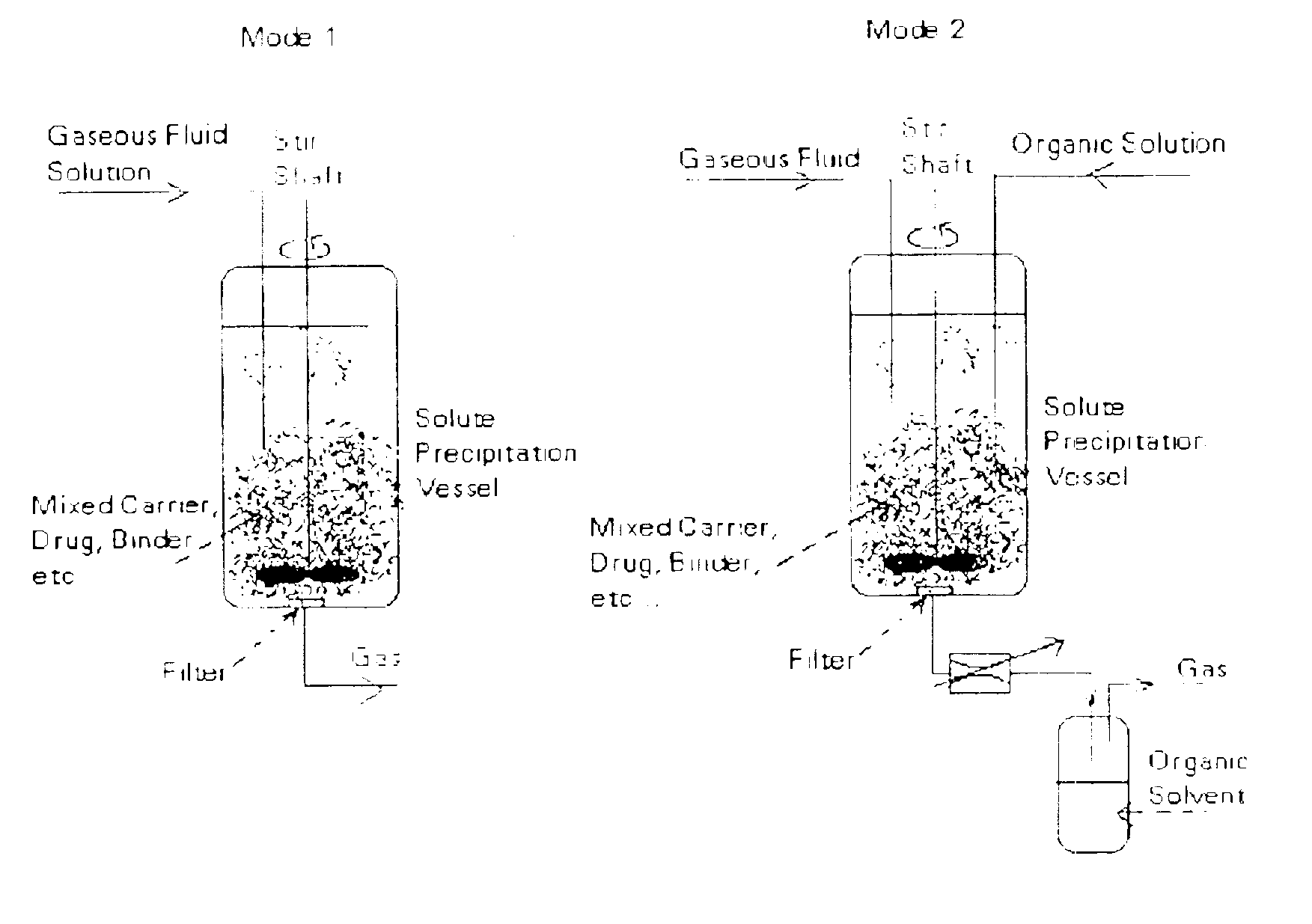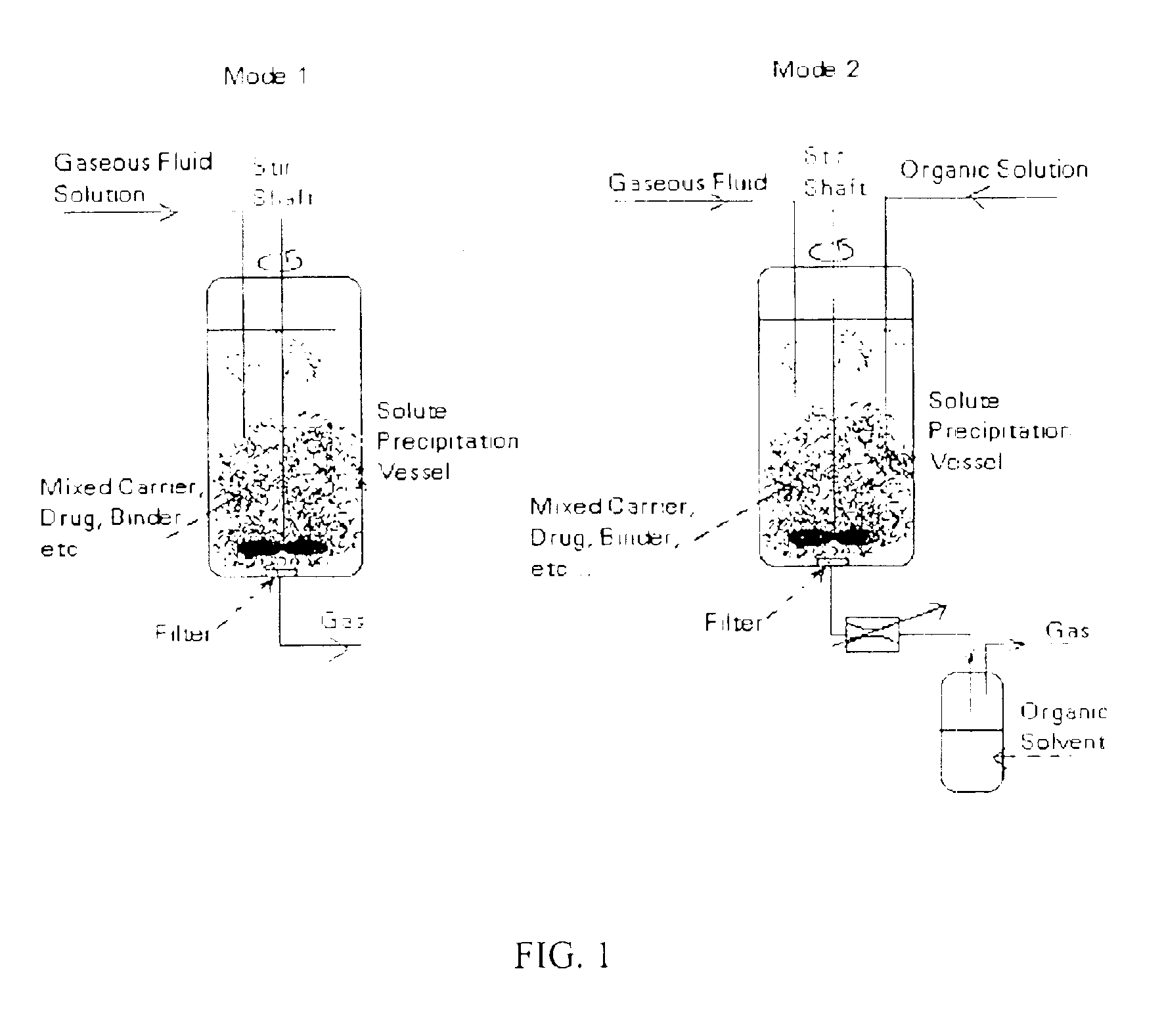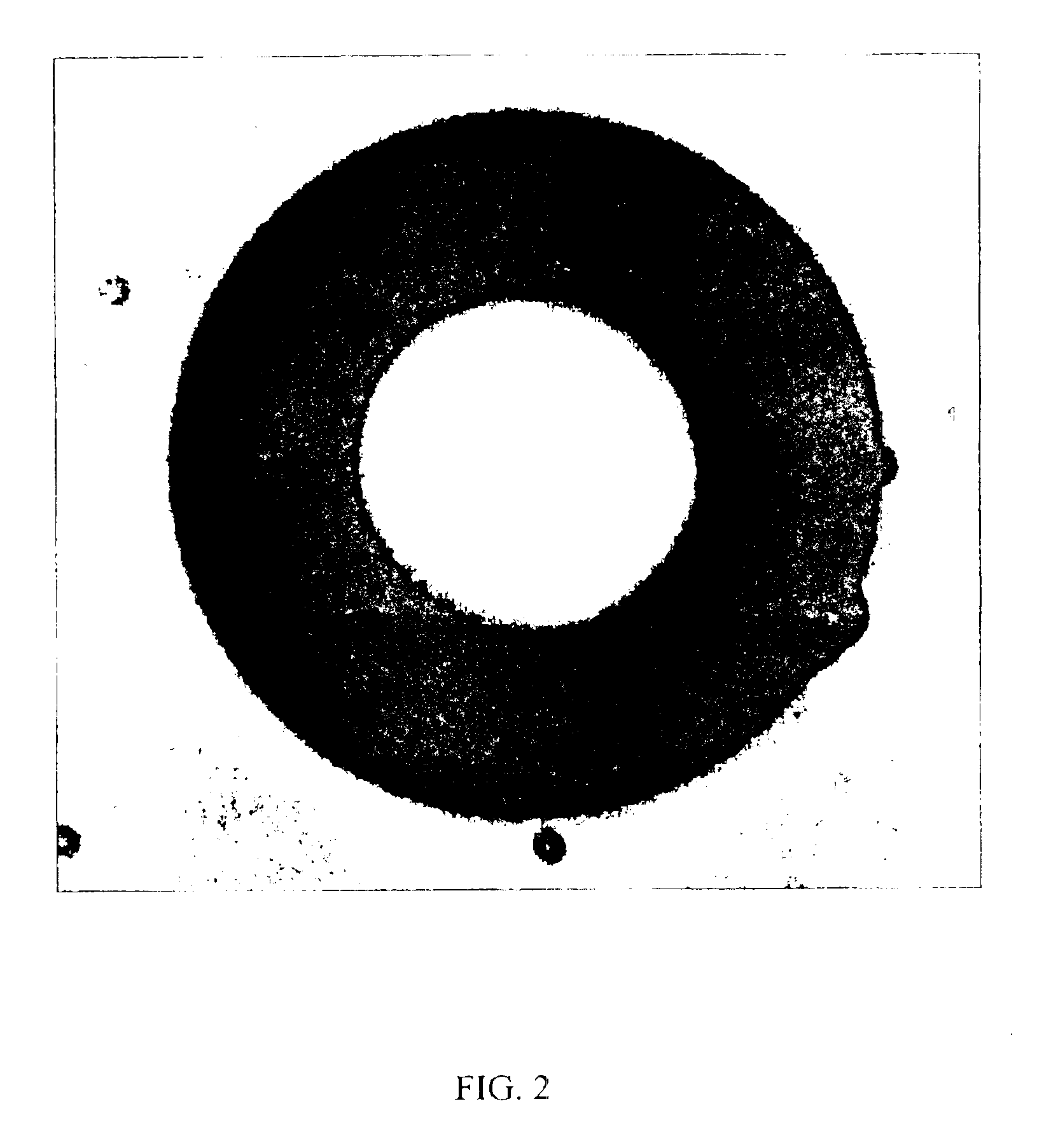Powder processing with pressurized gaseous fluids
- Summary
- Abstract
- Description
- Claims
- Application Information
AI Technical Summary
Benefits of technology
Problems solved by technology
Method used
Image
Examples
example 1
Recrystallization of a Drug Substance from Supercritical CO2 and Coating of Polymeric Micro-beads
[0124]Five (5) grams of a drug substance was mixed with an inert material (diatomaceous earth) and charged into a 1 liter vessel. Supercritical CO2 at 80° C. and 310 bar was then used to extract and solubilize the drug substance. The drug-laden effluent CO2 stream was then expanded to a lower pressure through a 75 μm orifice nozzle located in a 300 mL mixing vessel containing 25 grams of a white powder that consists of polystyrene divinyl benzene beads with a particle size in the range of 40-80 μm. The powder was mixed at 1,000 RPM using two 4-blade pitched radial impellers attached to the drive shaft. The bottom impeller was located near the bottom of the vessel. The nozzle lip was set close to the top of the powder bed so that the drug substance precipitated as microparticles and nanoparticles and rapidly mixed with the powder. Mixing vessel temperature and pressure were 40-50° C. and ...
example 2
Recrystallization of a Drug Substance from Supercritical CO2 and Coating of Lactose Monohydrate
[0126]In this Example, the beads used in the above example were replaced with lactose monohydrate, a widely used excipient material in tablet formulations. The processed powder contained about 10% drug, bore a yellowish color and appeared to have flow properties similar to those of unprocessed lactose. Light Microcopy (or bright field microscopy) and scanning electron microscopy did not provide evidence on the location of the drug substance within the processed powder. Because the drug substance is brightly fluorescent and lactose is not fluorescent, fluorescence microscopy was used to demonstrate that drug particles are fully associated with lactose particles.
[0127]Samples were prepared from processed dry powders by sprinkling a small amount of powder onto a glass microscope slide, adding 3 drops of non-fluorescent immersion oil and covering with a number 1.5 glass cover slip. Preparation...
example 3
Precipitation of a Drug Substance from a Sprayed Organic Solution and Blending it into and / or Coating it onto Lactose Particles with the Nozzle Above the Bed
[0132]In this example, a mass of 25 grams of lactose (approximate size: 99% less than 63 μm) was charged into a 300 mL vessel immersed in an isothermal (50° C.) water bath. The vessel was closed, mixing was started at 1000 rpm and CO2 flow through the vessel was then established. Upon reaching the desired pressure of 1,500 psig, about 95 mL of a solution of 25 mg / mL of a drug substance in methanol was sprayed through a 75 μm nozzle for about 1 hour at 1.5 mL / min. The nozzle tip was set at about 4 inches above the powder bed at rest. The solution rapidly mixed with supercritical CO2 causing the CO2insoluble drug to rapidly crystallize and blend within the bed. Following addition of the solution, drying was allowed to take place for about 2 hours. Effluent solvent-supercritical CO2 mixture passed through a 60 μm filter and then wa...
PUM
| Property | Measurement | Unit |
|---|---|---|
| Pressure | aaaaa | aaaaa |
| Speed | aaaaa | aaaaa |
Abstract
Description
Claims
Application Information
 Login to View More
Login to View More - R&D
- Intellectual Property
- Life Sciences
- Materials
- Tech Scout
- Unparalleled Data Quality
- Higher Quality Content
- 60% Fewer Hallucinations
Browse by: Latest US Patents, China's latest patents, Technical Efficacy Thesaurus, Application Domain, Technology Topic, Popular Technical Reports.
© 2025 PatSnap. All rights reserved.Legal|Privacy policy|Modern Slavery Act Transparency Statement|Sitemap|About US| Contact US: help@patsnap.com



